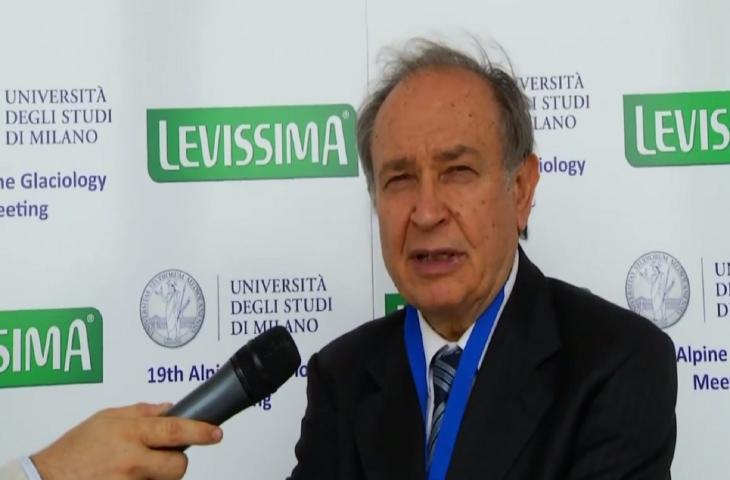University coordinated by the professor Claudio Smiraglia recently organized a major international meeting to understand the state of health of Italian and world glaciers. During the course of the meeting, he explained the latest developments which have come to light with the Levissima Spedizione Ghiacciai scientific project
“One of the most interesting topics of the study we are conducting as part of the new “Levissima Spedizione Ghiacciai” research project is represented by the debris covering that is increasing on the surface of glaciers. The project aims at understanding how the change of “skin” of the glacier is affecting its evolution.
The landscape is changing in a global way. The great mountains which, until only a few decades ago were covered with these snow-white cloaks are becoming dirty and black. This is because, on the one hand, the snow and ice covering is being reduced and, on the other, the ice that remains is covered by increasingly more frequent landslides. By means of this new project, we are trying to figure out how these surface changes are affecting the survival rate of these glaciers.
To conduct our research – for the first time in the Italian Alps, I believe – we are using a drone, a small aircraft which enables us to collect data on surface characteristics at an intermediate level between satellite images and direct work on the glacier. We are finding that, on the one hand, there has been an increase in fine material which is having a negative effect on the glacier: every little particle, absorbs solar energy, and retransmits it to the surrounding ice, which thus dissolves quicker. When however this debris cover exceeds a few decimetres, the thermal energy is no longer able to cross the thickness and reach the ice. This way, melting slows down. We are trying to understand what margin separates these two phenomena because this results in a change in the survival rate of glaciers.
The other aspect which is being studied, above all in conjunction with other biologist colleagues, is that this material on the glacier consists of a huge amount of biological material carried by the wind, the avalanches or the surrounding meadows. But we are also discovering that this fine material is not only of natural origin but also derives from human activities. From the Po valley, for example, the wind carries material produced by the combustion engines of motor vehicles or steel production. These materials may seem irrelevant, but they are to be found in huge quantities and are also helping to change the glacier survival rate”.











